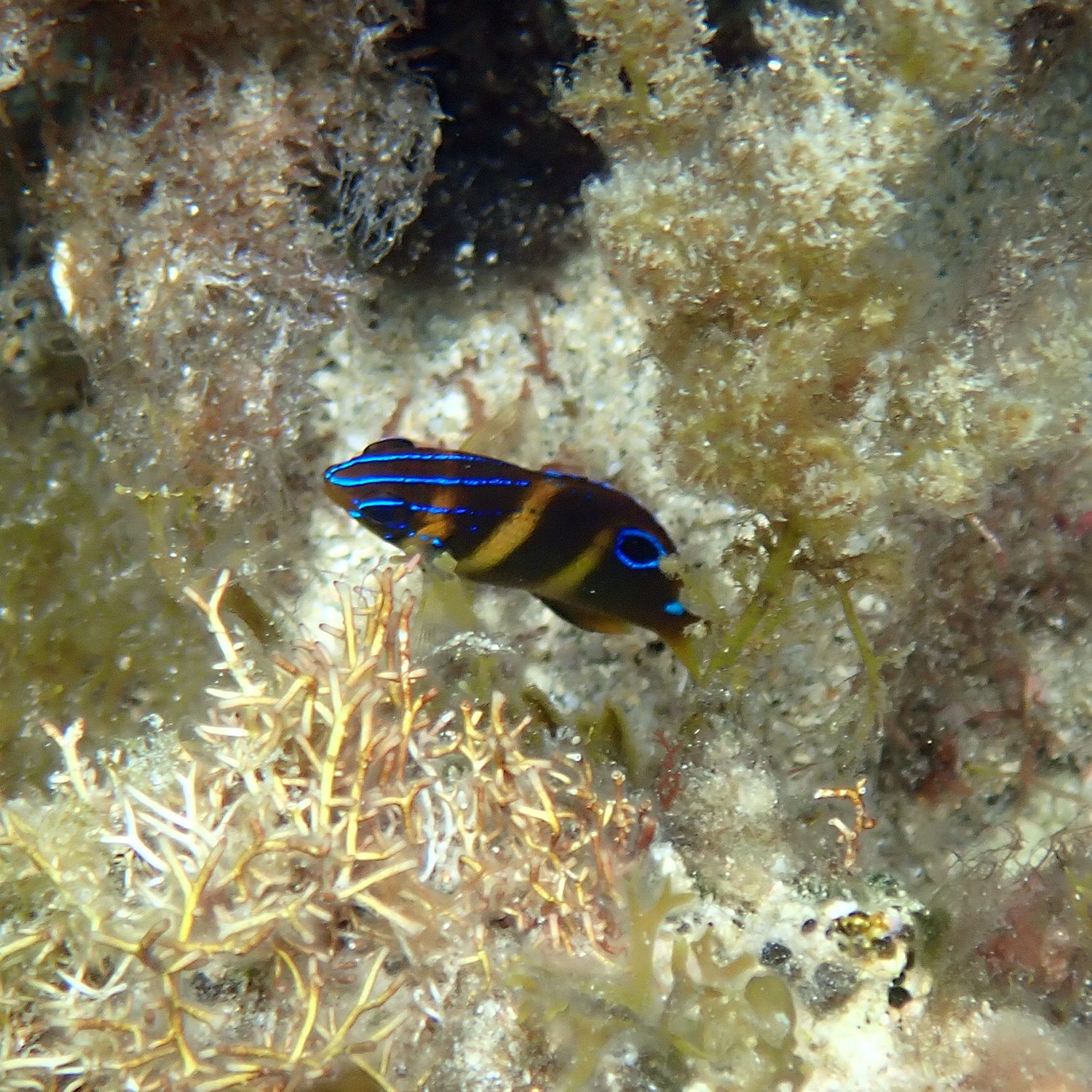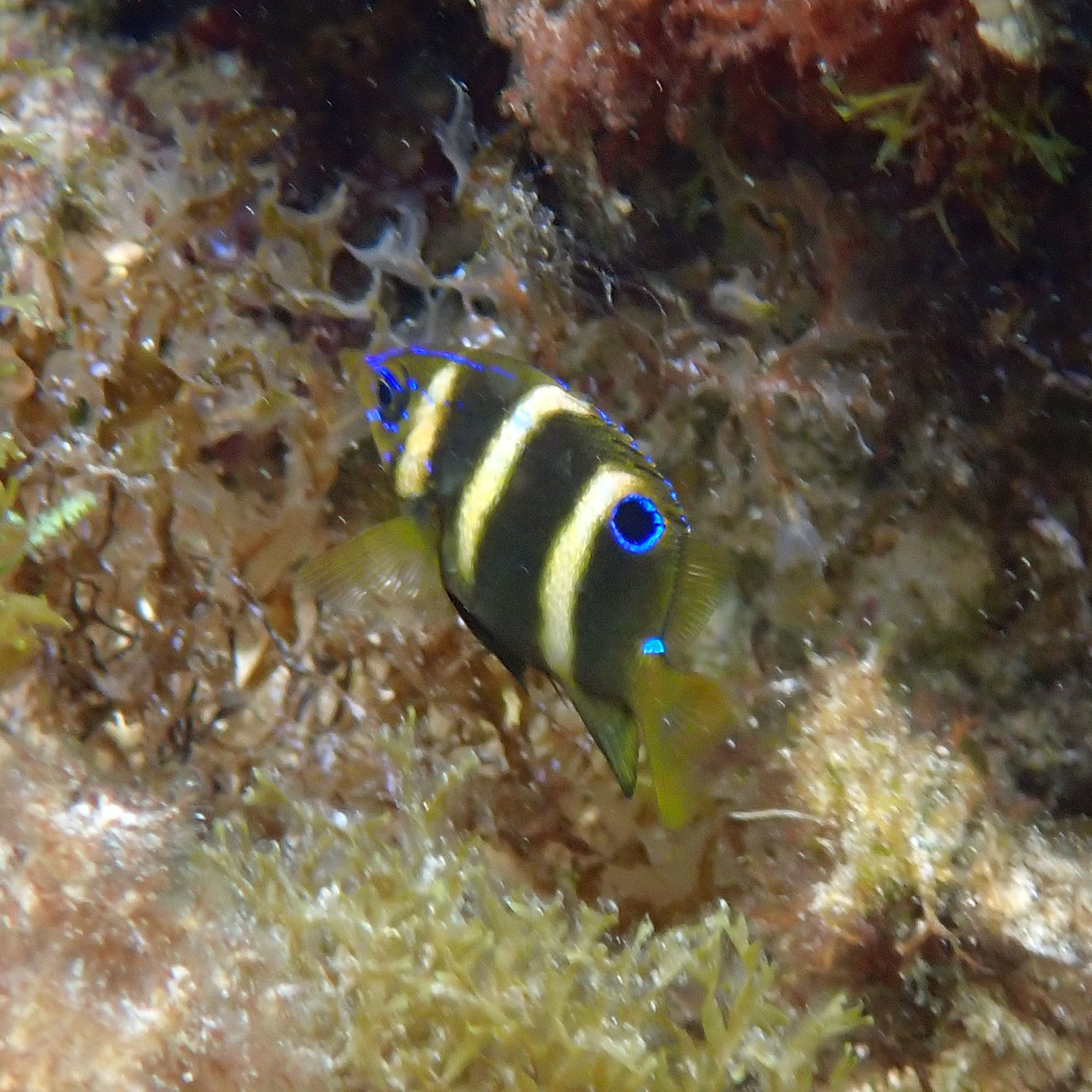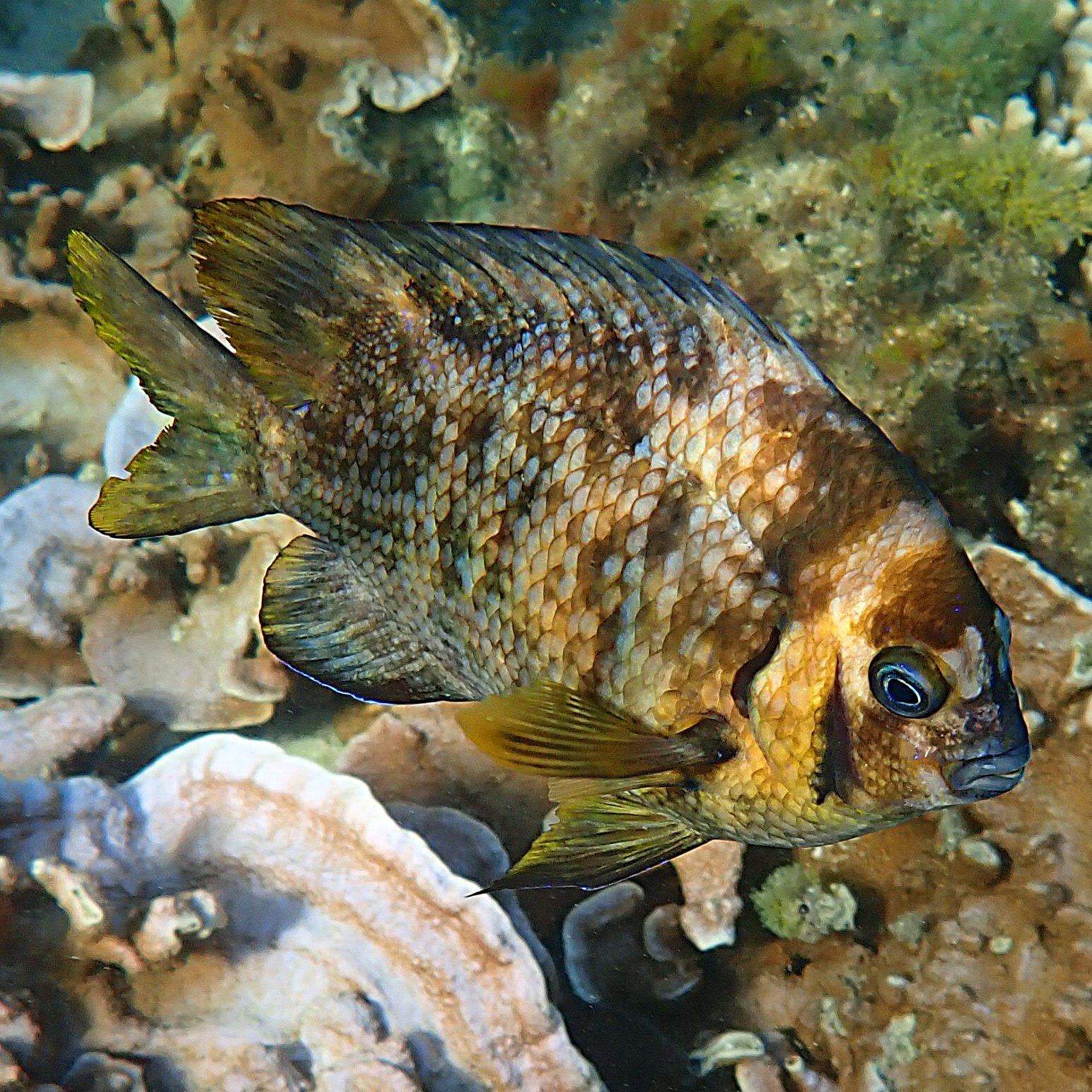Multispine damselfish, Neoglyphidodon polyacanthus, and banded scalyfins, Parma polylepis (known locally as the formidable and territorial aatuti!) are two members of the same family, the Pomacentridae, which also includes the better-known species, such as clownfishes, scissortail sergeants, and Indo-Pacific sergeants.
The aatuti and the multispines are arguably two of the most common species in Norfolk Island’s lagoons. People often confuse them, particularly the juveniles, so here are some photos to clarify which are which. Once the differences have been pointed out, you’ll never confuse them again.
As juveniles they are both orange with neon-blue markings, although the aatuti have a double set of lines. As they grow, the aatuti quickly gain those bands from which they get their name. These then gradually fade as they mature, while they develop a prominent orange face with bony knobs that get bigger as they grow. These tend to make them look rather cross all the time, which, in fact, they do seem to be. They grow to around 22 cm in length.
The multipsines, on the other hand, start out bright orange with a single neon blue line and a pair of distinctive blue ‘spectacles’. They then transition thorough a duller orange to a very boring dark browny-black as they age. Much smaller than the aatuti, they generally grow to about 12 to 15 cm in length and are not nearly as aggressive as the aatuti, although they do like to give you a very hard and inquisitive stare when you invade their space. They definitely have attitude!
Below are photos of the two species from juveniles (top left) to adults (bottom righ).



















